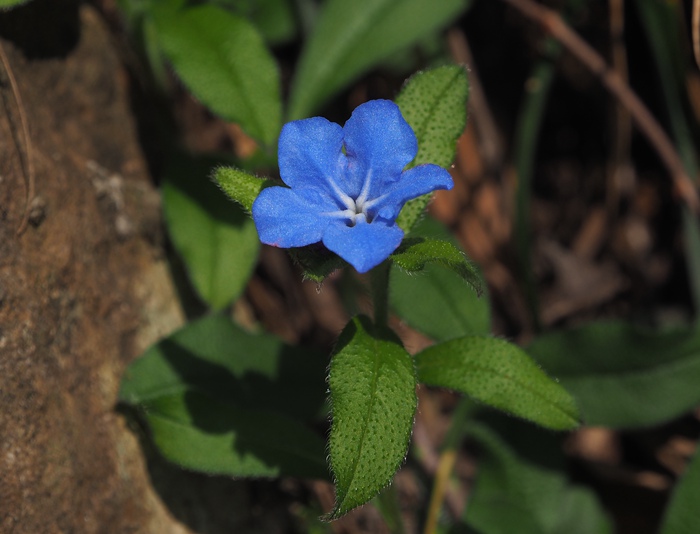- Scientific Name: Aegonychon zollingeri (DC.) Holub
- Ref: Folia Geobot. Phytotax. 8:165. 1973
- Synonyms: Buglossoides zollingeri (DC.) I.M.Johnst.; Lithospermum confertiflorum Miq.; L. japonicum A.Gray; L. zollingeri DC.; Plagiobothrys zollingeri (DC.) I.M.Johnst.
- Chinese Common Name: 梓木草 zǐmù∙cǎo
- Japanese Common Name: ホタルカズラ [蛍葛/蛍蔓] hotarukazura
- Family: Boraginaceae
- Genus: Aegonychon
- Distribution: Hills, mountain slopes, thickets. Anhui, SE Gansu, Guizhou, Jiangsu, Shaanxi, Sichuan, Taiwan, Zhejiang [Japan, Korea].
- Photo: 03/26/2017, Hangzhou, Zhejiang
Herbs perennial. Rhizomes creeping, to 30 cm. Roots brown, containing purple dye. Stems erect, 5-25 cm tall. Basal leaves sparsely arranged, short petiolate, oblanceolate to spatulate, 3-6 × 0.8-1.8 cm, short strigose, abaxially more densely strigose; stem leaves subsessile, same shape as basal leaves but smaller, base attenuate, apex acute or obtuse. Inflorescences terminal, 2-5 cm, 1- to several flowered; bracts leaflike. Pedicel short. Calyx ca. 6.5 mm; lobes linear-lanceolate, pubescent on both sides. Corolla blue or bluish purple, 1.5-1.8 cm, sparsely pubescent outside; tube and limb without a conspicuous border; throat with 5 longitudinal pleats extending to tube, ca. 4 mm, pleats slightly thickened and papillate; limb ca. 1 cm wide; lobes subequal, broadly obovate, 5-6 mm, margin entire, without veins. Stamens attached below pleats; anthers 1.5-2 mm. Style ca. 4 mm; stigma capitate. Nutlets white or light yellowish brown, oblique ovoid, 3-3.5 mm, smooth, shiny, concave adaxially, with center line forming a longitudinal groove. Fl. and fr. May-Aug. 2n = 16. (Flora of China)
